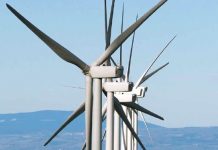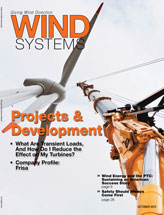Wind energy is continuing to gain a deserved reputation across the globe as an inexpensive form of renewable energy. We’re even beginning to see advancements toward the wind industry in my home state of Alabama where there are presently no online wind projects. According to AWEA, Alabama’s proximity to critical wind energy areas combined with the expertise from the nine active manufacturing facilities located here could make the “Yellowhammer State” a manufacturing powerhouse for the wind industry. Additionally, states like Alabama that have less wind resources than the bigger wind states such as Texas or those in the Midwest that are currently taking advantage of long-term power purchase agreements (PPAs) that import green energy from states rich in wind. As an example, Alabama Power, the second largest subsidiary of Southern Company, has signed two PPAs for a total 404 MW in wind from Kansas and Oklahoma.
As it is across the industry, when new projects and developments are introduced to an area — especially a wind-poor area that could use the economic boost — an investment in the procurement of renewable, clean energy generated by wind is also an investment in jobs, especially when it comes to construction, maintenance, manufacturing, operations, and the support sectors. Wind projects also yield lease payments for landowners and increase the surrounding communities’ tax bases.
In 2014, Alabama supported roughly 101 to 500 jobs directly and indirectly related to wind energy, according to AWEA. The Alabama Public Service Commission’s recently approved proposal by Alabama Power to secure up to 500 MW of renewable-generated energy over the next six years shows that we’re headed in the right direction.
This month, we explored the advancements in projects and development being made internationally and in the U.S. Our inFocus section features an article written by Doug Herr from AeroTorque on transient loads and how to reduce their effect on wind turbines. You’ll also find a feature from AWEA on wind energy, the PTC, and how the U.S. stands to benefit from it, as well as two columns from industry experts. Shawn Lamb of Danish Wind Power Academy addresses the coming shortage of qualified wind technicians, and Jack Wallace of Frontier Pro Services discusses the importance of putting safety first while on the job.
Thanks for reading, and I hope you enjoy this issue of Wind Systems as much as I have.































